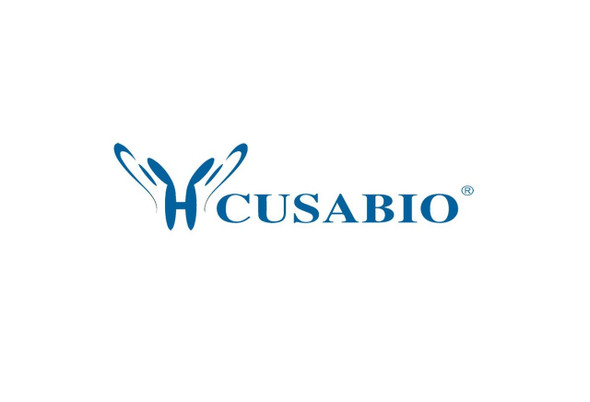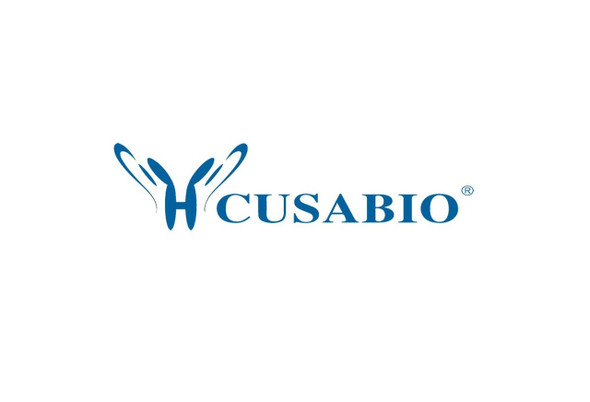Cusabio Virus & Bacteria Recombinants
Recombinant Heron hepatitis B virus Protein P (P), partial | CSB-EP319601HGG
- SKU:
- CSB-EP319601HGG
- Availability:
- 13 - 23 Working Days
Description
Recombinant Heron hepatitis B virus Protein P (P), partial | CSB-EP319601HGG | Cusabio
Alternative Name(s): P; Protein P [Includes: DNA-directed DNA polymerase; EC 2.7.7.7); RNA-directed DNA polymerase; EC 2.7.7.49); Ribonuclease H; EC 3.1.26.4)]
Gene Names: P
Research Areas: Others
Organism: Heron hepatitis B virus (HHBV)
AA Sequence: SYLRGNTSWPNRVTGRIFLVDKNSRNTEEARLVVDFSQFSKGKNAMRFPKYWCPNLTTLRRILPVGMPRISLDLSQAFYHLPLAPASSSRLAVSDGKQVYYFRKAPMGVGLSPFLLHLFTTAIGAEIASRFNVWTFSYMDDFLLCHPSARHLNTISHAVCTFLQEFGIRINFDKMTPSPVTTIRFLGYEI
Source: E.coli
Tag Info: N-terminal 10xHis-tagged and C-terminal Myc-tagged
Expression Region: 376-565aa
Sequence Info: Partial
MW: 28.7 kDa
Purity: Greater than 85% as determined by SDS-PAGE.
Relevance: Multifunctional enzyme that converts the viral RNA genome into dsDNA in viral cytoplasmic capsids. This enzyme displays a DNA polymerase activity that can copy either DNA or RNA templates, and a ribonuclease H (RNase H) activity that cleaves the RNA strand of RNA-DNA heteroduplexes in a partially processive 3'- to 5'-endonucleasic mode. Neo-synthesized pregenomic RNA (pgRNA) are encapsidated together with the P protein, and reverse-transcribed inside the nucleocapsid. Initiation of reverse-transcription occurs first by binding the epsilon loop on the pgRNA genome, and is initiated by protein priming, thereby the 5'-end of (-)DNA is covalently linked to P protein. Partial (+)DNA is synthesized from the (-)DNA template and generates the relaxed circular DNA (RC-DNA) genome. After budding and infection, the RC-DNA migrates in the nucleus, and is converted into a plasmid-like covalently closed circular DNA (cccDNA). The activity of P protein does not seem to be necessary for cccDNA generation, and is presumably released from (+)DNA by host nuclear DNA repair machinery
Reference: "Isolation and characterization of a hepatitis B virus endemic in herons." Sprengel R., Kaleta E.F., Will H. J. Virol. 62:3832-3839(1988)
Storage: The shelf life is related to many factors, storage state, buffer ingredients, storage temperature and the stability of the protein itself. Generally, the shelf life of liquid form is 6 months at -20?/-80?. The shelf life of lyophilized form is 12 months at -20?/-80?.
Notes: Repeated freezing and thawing is not recommended. Store working aliquots at 4? for up to one week.
Function: Multifunctional enzyme that converts the viral RNA genome into dsDNA in viral cytoplasmic capsids. This enzyme displays a DNA polymerase activity that can copy either DNA or RNA templates, and a ribonuclease H (RNase H) activity that cleaves the RNA strand of RNA-DNA heteroduplexes in a partially processive 3'- to 5'-endonucleasic mode. Neo-synthesized pregenomic RNA (pgRNA) are encapsidated together with the P protein, and reverse-transcribed inside the nucleocapsid. Initiation of reverse-transcription occurs first by binding the epsilon loop on the pgRNA genome, and is initiated by protein priming, thereby the 5'-end of (-)DNA is covalently linked to P protein. Partial (+)DNA is synthesized from the (-)DNA template and generates the relaxed circular DNA (RC-DNA) genome. After budding and infection, the RC-DNA migrates in the nucleus, and is converted into a plasmid-like covalently closed circular DNA (cccDNA). The activity of P protein does not seem to be necessary for cccDNA generation, and is presumably released from (+)DNA by host nuclear DNA repair machinery (By similarity).
Involvement in disease:
Subcellular Location:
Protein Families: Hepadnaviridae P protein family
Tissue Specificity:
Paythway:
Form: Liquid or Lyophilized powder
Buffer: If the delivery form is liquid, the default storage buffer is Tris/PBS-based buffer, 5%-50% glycerol. If the delivery form is lyophilized powder, the buffer before lyophilization is Tris/PBS-based buffer, 6% Trehalose, pH 8.0.
Reconstitution: We recommend that this vial be briefly centrifuged prior to opening to bring the contents to the bottom. Please reconstitute protein in deionized sterile water to a concentration of 0.1-1.0 mg/mL.We recommend to add 5-50% of glycerol (final concentration) and aliquot for long-term storage at -20?/-80?. Our default final concentration of glycerol is 50%. Customers could use it as reference.
Uniprot ID: P13846
HGNC Database Link: N/A
UniGene Database Link: N/A
KEGG Database Link: KEGG
STRING Database Link: N/A
OMIM Database Link: N/A









